What's with the chest pains?
There are many causes of chest pain and the most serious cases are acute myocardial infarction, ruptured aortic dissection, pulmonary thromboembolism, tension pneumothorax and a few more, which also cause chest pain and if left untreated can lead to death of the patient. It takes an experienced doctor to differentiate these diseases well and to do some tests.
Chest pain can also be the result of milder illnesses such as pneumonia, shingles, costochondritis, etc. These are usually not serious, but sometimes they are not easy to diagnose.
If the elderly, there is chest pain, we have to ask him whether there is hypertension, if so, then be alert to cardiovascular diseases leading to chest pain may be, to pay attention to the duration of chest pain, there is no dyspnea, palpitations and other symptoms, the electrocardiogram how the situation is, if necessary, but also to draw blood to check the cardiac enzymes and so on, to understand whether there is coronary heart disease may be. In some cases, a CT of the chest is also needed to determine whether there is a pulmonary embolism or aortic coarctation.
If it is a young person, generally the possibility of rib chondritis, pneumonia and other diseases, first take a chest X-ray, if the chest X-ray did not see a pneumonia, then basically exclude pneumonia. If the patient's chest wall has pressure pain, and with breathing also has pain, then we should consider the rib chondritis may be, these may often be accidentally collision injury caused by the general use of some antipyretic pain reliever can be, such as ibuprofen.
That's why there are many causes of chest pain, so it's important to look carefully at which ones and then deal with the cause.
谢邀.
Chest pain can be caused by diseases of the heart and lungs, and it can also be caused by diseases other than the heart and lungs.
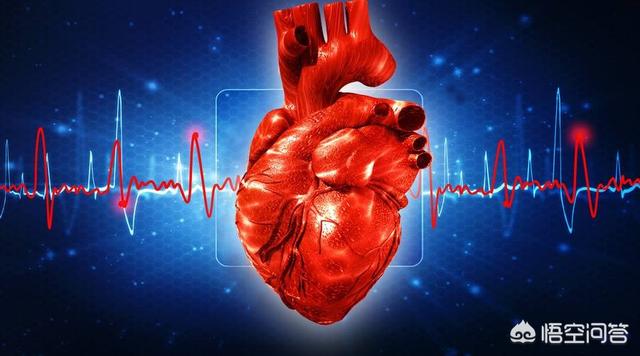
That is, chest pain is categorized into cardiac chest pain and non-cardiac chest pain.
Common cardiac sources of chest pain include angina pectoris due to coronary atherosclerosis, acute myocardial infarction, acute pericardial inflammation, myocarditis, aortic aneurysm, and aortic coarctation.
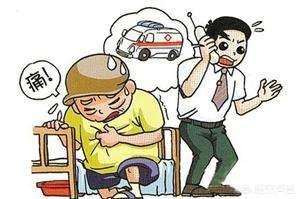
Common lesions for noncardiac chest pain are:
Bilateral lung disease: lung infection, lung cancer, and pulmonary embolism.
② Pleural lesions: pyothorax, pleurisy, spontaneous pneumothorax
③ Chest wall lesions: intercostal neuritis, herpes zoster, costal osteitis
④ Mediastinal lesions: mediastinal tumor, mediastinal emphysema
④Esophageal and gastric pathologies: reflux esophagitis, esophageal cancer, gastric disorders
⑤ Hepatobiliary, pancreatic, and splenic lesions: liver abscesses, splenic infarcts
(vi) Chest pain of psychological origin: e.g., of hyperventilation syndrome.
The chest is a large area, and pain is an even more common symptom, and when the two are linked, we realize that there is no clinical significance, and it is not possible to make a definitive diagnosis at all.
Even guessing to the best of my ability, it's hard to help the patient because there are just too many possibilities from mild to severe, and I'm confident that I can talk the patient to sleep if I go into detail.
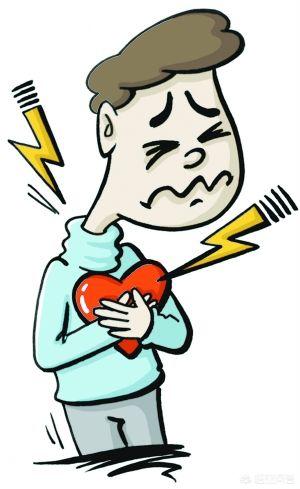
Various details of the manifestations of chest pain:
1, chest pain + cough, fever
If the symptoms appear more quickly, then you need to be on the lookout for pneumonia and bacterial pleurisy; on the contrary, when the symptoms appear more slowly and are accompanied by weight loss and fatigue, you need to suspect tuberculosis or tumors.
2, Chest pain + present during activity
Mostly myocardial ischemia, if the duration is shorter need to be vigilant for stable angina, if the duration is longer, more severe, nitroglycerin can not be relieved, then suggests myocardial infarction.
3, chest pain + aggravated by breathing, bending over
The patient needs to be suspected of having pericarditis.
4, chest pain + burning sensation, aggravated by eating and lying down
The patient needs to be suspected of having reflux esophagitis.
5, Chest pain + cough, sputum, coughing up blood
The patient needs to be alerted to the presence of a tumor.
6, Chest pain + increased respiration, dyspnea
The patient needs to be alerted to the fact that he or she has a respiratory disease.
7, Chest pain + shortness of breath, coughing up blood, unconsciousness, near-death feeling.
The patient needs to be alerted to the possibility of a pulmonary embolism.
8, Chest pain + vague pain, dysphagia, pain worse when swallowing
Patients need to be alerted to the fact that they are suffering from a digestive disorder.
9, chest pain + neck and shoulder pain, numbness in upper limbs
The patient needs to be alerted to the possibility of cervicogenic heart disease.
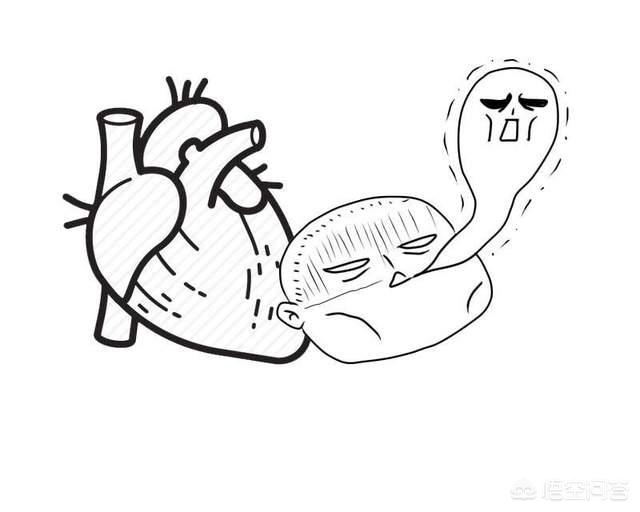
Chest pain, although common, is dangerous in some patients!
I've always believed that health is no small matter, and that no amount of caution is warranted when it comes to potentially life-threatening illnesses.
When chest pain appears, the first thing we should do is to distinguish if it is a more critical situation:
1, Chest pain lasts for a long time and is too intense.
2, inability to breathe normally and a strong sense of near death.
3, Patients with associated high-risk diseases (cerebral infarction, hypertension, etc.), family history of genetic disorders.
These three items, while not completely pointing to a high-risk patient, do typify the vast majority of high-risk chest pain, and when a patient presents with these three conditions, call 120 immediately for help.

I hope my answer helps you!
If there's anything you don't understand, comment and private message me!
What's wrong with your chest?
Common causes of chest pain are:
(1) Lung, pleural and mediastinal diseases include pneumonia, pleurisy, spontaneous pneumothorax, bronchial carcinoma, acute mediastinitis, mediastinal tumors and so on. Its pain is characterized by relatively limited site, but it can be transmitted along the nerve distribution to the shoulder or upper abdomen, and the pain can be aggravated when taking a deep breath or changing the position, accompanied by symptoms such as cough, sputum and dyspnea, etc. X-ray examination is helpful in confirming the diagnosis. The specific diseases are different and have their own characteristics: for example, bronchial carcinoma is mostly seen in middle-aged or above patients who have smoked for a long time, with a longer course of the disease; spontaneous pneumothorax has a more acute onset, mostly seen in young and middle-aged people, and it often occurs after holding the breath with force, with obvious respiratory difficulties; pneumonia has high temperature, cough and sputum, etc., besides chest pain; chest pain of pleurisy is obviously related to respiration and aggravated with respiration; mediastinal lesions are mostly post-thoracic chest pain.
(2) The most common cardiovascular diseases are angina pectoris and acute myocardial infarction. The pain is characterized by a history of heart disease, pain is mostly limited to the posterior sternum and precordial area, but also can be seen in the epigastric region and the back, to the left shoulder reflex, exertion or emotional agitation when the pain is aggravated. Acute myocardial infarction pain is mostly boring pain, squeezing pain, stabbing pain, colic, cutting pain, etc., oral nitroglycerin can not be relieved. A few may only manifest as vague pain or pressure in the chest area. The pain lasts from hours to days and is often accompanied by profuse sweating, irritability, pallor, sometimes a drop in blood pressure and arrhythmia. The pain site of angina pectoris is the same as that of acute myocardial infarction, but the pain is less severe and can be relieved by resting for a few minutes or taking nitroglycerin. The most common triggers are physical activity, emotional excitement, after a full meal, and smoking and cold stimulation.
(3) Diseases of the chest wall are also very common clinically, such as intercostal neuralgia, costochondritis, chest muscle strain, and acute cellulitis. The pain of such diseases is characterized by pain confined to the localization of the lesion, obvious pressure pain, no radiation, and the nature of the pain is not specific.
(4) Other diseases in some cases other parts of the disease can also show chest pain, such as reflux esophagitis in digestive system diseases, can cause pain in the middle of the chest, and to the back of the shoulders. Acute pancreatitis and perforated gastric ulcers can also cause chest pain. In diaphragmatic pleurisy, subdiaphragmatic abscess, diaphragmatic hernia, hepatocellular carcinoma, hepatitis and other diseases, due to the stimulation of the phrenic nerve sensory fibers or mediastinal compression, chest pain can also occur, so be careful to identify.
The key to dealing with acute chest pain is to find out the cause of the disease and treat it. For those with a longer course of the disease and other accompanying symptoms that are obvious, do not deal with them on your own, and it is best to go to the hospital as soon as possible to avoid delays in treatment.
This content was reviewed by Yu Xuezhong, Chief Physician, Department of Emergency Medicine, Peking Union Medical College Hospital.
Click here for details of the doctor's answer
Chest pain is a common symptom, usually caused by a chest condition, and the severity is related to the cause of the chest pain. Because heart health is at stake, chest pain can be serious and life-threatening. Therefore, patients with chest pain should pay attention to find the cause so that timely and appropriate treatment.

What's with the chest pains?
Short-term chest pain may be due to psychological factors or improper lifestyle, such as staying up all night, etc., which can usually be relieved quickly and is not a big problem. However, recurrent chest pain should be taken seriously.
1. Psychological factors:Patients may present with chest pain symptoms due to hypochondriacs or chronic stress, tension, or insomnia. Symptoms vary widely in this group of patients, but are often expressed as a feeling of tightness or pain in the internal organs.
2. Myocardial ischemia and injury:The most common cause of angina pectoris is most often triggered by obstruction of blood vessels due to coronary atherosclerosis, or by fever,Low blood pressure,Caused by anemia and hypoxia. Commonly associated with coronary artery disease, valvular heart disease, hypertrophic cardiomyopathy, and ventricular hypertrophy.
3. Pleural diseases:如Pneumothorax,Pleurisy, pulmonary infarction,Lung infections,Lung tumors, esophageal disorders, mediastinal tumors, etc. This type of chest pain is related to breathing and coughing, and is aggravated by deep breathing and coughing, often accompanied by dyspnea.
4. Cardiovascular diseases:Myocardial infarction, pericarditis, aortic coarctation are common. It manifests as oppressive, congestive pain in the precordial region and retrosternal area, or even tearing pain, which may radiate to the left shoulder, neck and left arm.
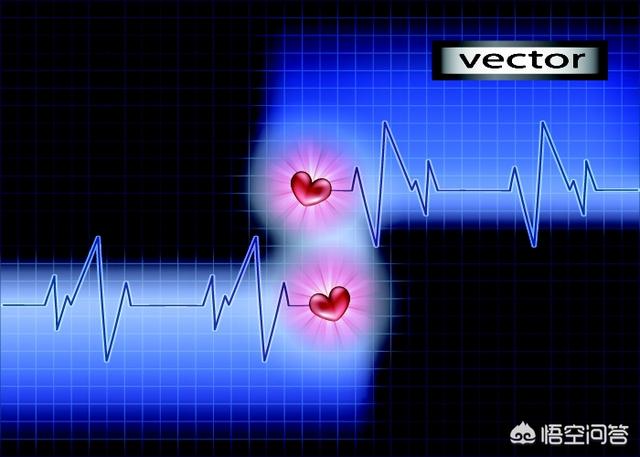
5, Chest wall disease:如Fractured ribs,Chest wall contusion, costochondritis, intercostal neuritis, intermuscular neuralgia, herpes zoster, esophagitis, etc. The pain is often brief and sharp, and can be reinduced by direct pressure at the costal cartilages and joints. Frozen shoulder, cervical spondylosis, spinal arthritis and bursitis can also produce chest pain.
6. Diseases of the organs:Symptoms of chest pain can also occur in cases such as subphrenic abscesses, acute cholecystitis, and acute pancreatitis.
7, Spine disease:Mild misalignment and straining of joints and vertebrae, such as the spinal thoracic joints, due to trauma, strain injury, wind and cold, etc., can stimulate the relevant nerves and give rise to the symptom of chest pain.
In short, chest pain may be caused by physiological factors, but in most cases it is caused by disease, so patients should find the cause of the disease at the first time, and seek medical diagnosis and and treatment in a timely manner. For patients with severe chest pain, it is also necessary to do a good job of first aid measures, such as angina should contain nitroglycerin; pleurisy caused by chest pain, attention should be paid to fixing the chest wall, reduce breathing and so on.
Sometimes a vague pain in the chest is a relatively common symptom. There are many reasons for it, and sometimes it can be caused by an injury to the chest due to too much exertion, or it can be caused by certain diseases. Whenever this symptom occurs, many people get worried and scared. In general, there are six main reasons that can cause chest pain.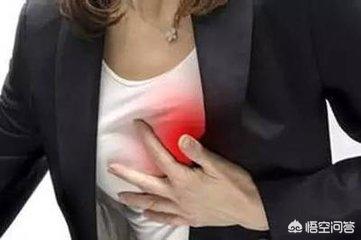
1. Muscle strain in the chest
This is usually caused by overworking or lifting too heavy things. Chest pain caused by this situation is not a big problem, just need to rest and pay attention to not carry too heavy things.
2. Caused by gastrointestinal diseases
Sometimes stomach pain due to stomach problems, peptic ulcers, reflux gastritis, and stomach cramps can sometimes radiate to the chest and abdominal area, causing chest pain.

3. Caused by soft rib osteoarthritis
Chondromalacia is a very common condition in which the main symptom is pain in the chest (above the breasts), and sometimes in the shoulder blades and back, and is accompanied by the pain mentioned above when breathing.
4. Fractured ribs lead to
If there is a rib fracture, first of all the pain is more pronounced, both in quiet and in movement, although the pain is more pronounced during movement. Secondly, the fracture is accompanied by a feeling of chest tightness and sometimes swelling.
5. Other diseases
Generally rib neuralgia, heart disease, lung disease and liver disease can cause chest pain.
First of all chest pain should be differentiated between the location of the pain, the nature of the pain, and what other symptoms accompany it.
(1) If the chest pain is below the xiphoid process (upper abdomen), it is usually seen in digestive system diseases, but when the pain is severe and accompanied by dyspnea, it is also seen in "lower wall myocardial infarction";
(2) Chest pain, pain in the form of cutting pain, radiating to the back and left upper limb, accompanied by dyspnea should be considered, coronary heart disease, myocardial infarction, laminated aneurysm and so on.
(3) Chest pain with dyspnea should be pleurisy, pulmonary infarction, primary lung cancer, mediastinal tumor, spontaneous pneumothorax, and entrapment aneurysm.
There is also shingles that can likewise cause chest pain; in short, chest pain is a common but life-threatening condition that must be treated promptly or by calling 120, or a chest pain center!
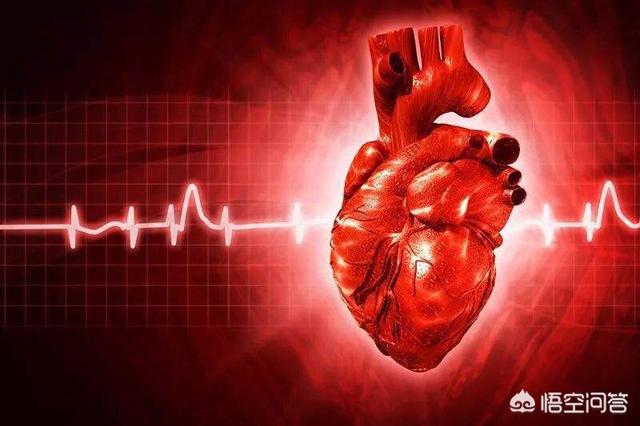

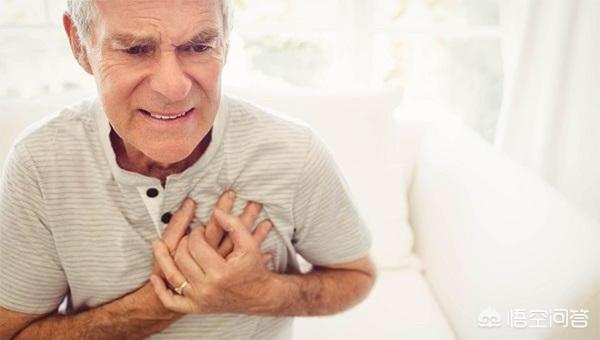
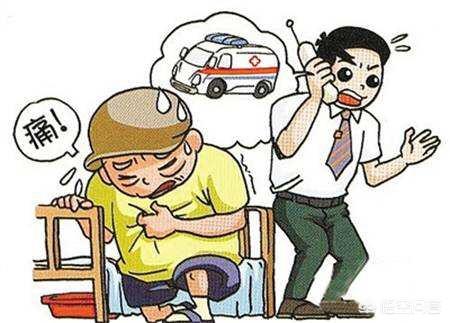
Chest pain is a common symptom, is the organism occurs a variety of emergency changes, to pay attention to, many young people do not pay attention to, prone to serious situations, chest pain is a common clinical symptom, the causes include non-organic causes and organic causes, specific analysis is as follows:
1, non-organic causes: that is, mental causes, such as clinical many young people chest pain results in no symptoms;
2, organic causes: chest pain is more serious, especially diabetic patients with chest pain without pain symptoms, more dangerous, the patient is prone to acute infarction, sudden death.
Chest pain should be taken very seriously, usually by asking about recent trauma, colds, changes, irritation, and overtime upset, etc. An electrocardiogram can be done.
See whether there is a change in heart rate, ST segment downshift, ischemia, and then do a cardiac ultrasound examination of ejection function changes, etc., do myocardial enzyme profile to check the enzyme profile changes, infarction cell necrosis changes, no changes to find a specialist in time. In addition many people often press the chest found that the more you press the more pain, is the wrong approach, should be appropriate rest, appropriate exercise, for the relief of chest pain is helpful.
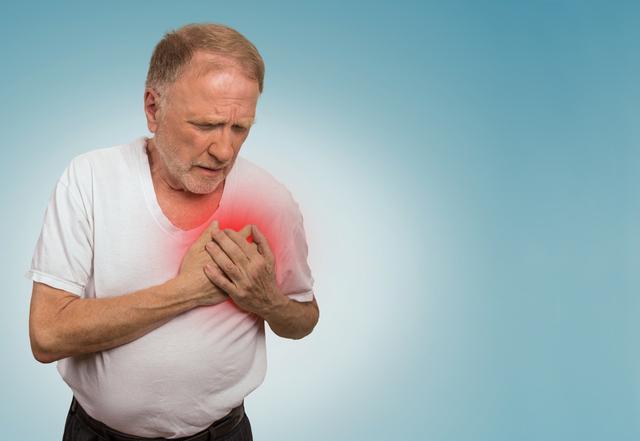
Suggest getting a low-dose CT.
What causes chest pain in general, pain in general is the cause of a bad mood. As long as there is no disease, the heart hurts sometimes when you don't eat well. There is also eating especially cold things, will also stomach pain. There is also the sweat, can not drink ice-cold drinks.
There are also reasons why you feel uncomfortable when you have an angry fight with someone, or when your job doesn't go well, or when your children don't listen to you, or when you can't find a girlfriend, or when you don't look good enough. All of these reasons can make one's chest hurt.
Bottom line mood is most important, as long as you are in a good mood you won't have chest pains, find ways to cheer yourself up. I've been learning to sing at home for the past two days, so I can find some fun for myself!
This question and answer are from the site users, does not represent the position of the site, such as infringement, please contact the administrator to delete.